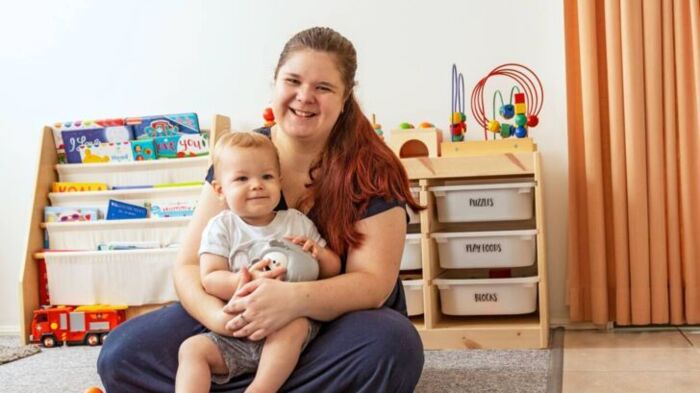Ditching debt to start a financially independent family
By Susan Hely
Many determined Aussies were on the road to financial independence when the pandemic hit.
While the flow-on affects of COVID-19 have presented numerous obstacles to this vision, many have used this time to reprioritise their financial and personal goals.
Over the next few weeks, we're sharing the stories of six Australians who are breaking the money management mould.
Tasha Torzsa
AIM: Financial Independence. To buy land and a tiny house.
INCOME NEEDED: $55,000 a year.
INVESTMENT STRATEGY: Save. Keep an emergency fund and buy Vanguard funds with savings.
When Nataasha Torzsa, known as Tasha, came across the concept of financial independence on Instagram, her spending was out of control. She was $11,500 in debt, which she shuffled around on credit cards. She had no savings or emergency fund.
Tasha, who was single, really wanted a baby. But financially it wasn't an option, unless she signed on for the financial independence journey. To hold herself accountable and stay on track, she started an Instagram blog called tashaagetsfrugal in 2017.
"Having a supportive community can be the difference between success or giving up," says Tasha about how they celebrated her wins and encouraged her at every step.
Tasha learnt a great deal from her followers, particularly about cooking. "Cooking is something I don't really like doing and spending money on food is my biggest weakness," she admits. "Learning ways that I can cut back on the cost of food and create recipes that are still yummy is very helpful."
Tasha also learnt about side hustles to boost her savings, such as having a business, house sitting, pet sitting, dog walking, and doing surveys and market research.
Within 18 months, she was debt free, helped by cutting back on expenses such as personal training and gym membership, plus taking a second job on the weekends on top of her full-time work. She spoke to her real estate agent and extended her lease, scoring a $50 a week rent reduction.
Her savings got a kick along when she was made redundant, helping her plans to have a baby.
"There is no way I would have had a baby in my previous situation. One of the reasons I started on a debt-free journey was so that I could have a baby on my own and be financially stable enough to raise my child and not be stressed about money," says Tasha.
In December 2019, she fell pregnant. "Once you've got some savings behind you, it makes you feel more in control, less worried," she says.
She shared a house to keep her rent and utility bills low. She funded her year of maternity leave from two and a half weeks annual leave, 14 weeks of paid employer maternity leave plus 18 weeks paid government leave at the minimum wage.
Her son Ryan was born at the end of August 2020. From her frugal living, she bought everything that he needed, aside from his car seat, from Facebook Marketplace.
"That's everything from the cot to his pram to clothing. I saved hundreds, maybe thousands, of dollars buying second-hand. His cot was half the price of brand new. The pram was about $500 off the price of a new one," says Tasha.
She points out that babies don't need brand-new items. "They don't care if something is second-hand. They also outgrow clothing really fast, so buying brand-new doesn't seem worth it when they wear something for only three months. Any time I am looking for something for Ryan, I first check Marketplace."
As a single mother, her focus is on Ryan and enjoying her life with him. She works three days a week in a job she loves and remarkably saved almost $10,000, or 22% of her earnings, last year, blogging about her spending and saving on Instagram.
"Once you've got enough savings behind you, you do learn that it's possible and if you have a period of time where you don't save anything you know that you can still do it and you'll be able to get back to it," says Tasha.
She lives on her own with Ryan, so her costs are higher. "I don't have any sort of loan or credit card. I don't owe any money aside from my HECS."
Tasha's dream is to buy a tiny home and a block of land.
"I'm still only about 45% to my goal to be able to build a tiny home. The savings goal is about $100,000. Once I've got that, then I can look at getting a home built and finding land. I'm also hoping that the local laws change in that time and living in a home on wheels for extended periods of time becomes legal. Currently it's not actually legal to live in a tiny home as they're classed as caravans."
Tasha likes the idea of defying the norm, doing what we want and having more freedom in our lives.
"Why should we spend our lives in the typical 9-5, get married, have kids, buy a house with an expensive mortgage, be in debt. It's not the only way to live.
Keep your eye out for more Aussies sharing their FIRE journeys over the next few weeks. Or, order the April issue of Money for all the details!
Get stories like this in our newsletters.



